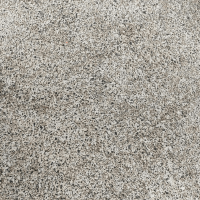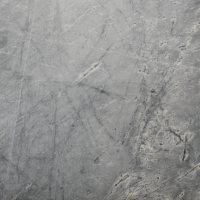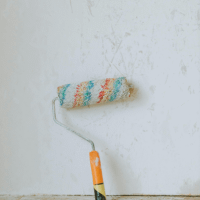Introduction
A good finish significantly enhances concrete floors’ aesthetic appeal and functional performance. A well-finished concrete floor meets users’ diverse needs and improves the surface’s durability and reliability. The following sections elaborate on the various benefits of finishing concrete floors, drawing insights from the provided research papers.
Aesthetic and Functional Enhancement
Finishing concrete floors with colour powder hardeners, epoxy coatings, or acid stains can enhance their aesthetic appeal and functionality. These innovative methods provide a unique opportunity for customisation, allowing users to select colours and finishes that align with their tastes and the overall design ethos of the space. Whether it be a bustling parking lot, a busy factory, or an educational institution like a school, incorporating these finishes transforms these environments into visually striking areas. The vibrant hues beautify the surroundings and serve a practical purpose by improving wear resistance. This increase in durability is particularly beneficial in locations that experience high foot traffic and heavy machinery, ultimately extending the lifespan of the flooring system (Geun, 2016).
Moreover, applying decorative finishes on concrete floors introduces an additional layer of sophistication. These finishes can be expertly designed to mimic the appearance of luxurious materials such as cut stone or brick veneer. By achieving such aesthetics, businesses and institutions can eliminate the need for other flooring materials, including carpet and hardwood, which often require more maintenance and upkeep. The result is a surface that enhances the overall visual appeal of the environment and provides a robust and resilient flooring solution capable of withstanding the rigours of daily use. This durability is particularly vital in settings where heavy equipment, foot traffic, or environmental factors come into play, ensuring that the investment in flooring remains sound over time and providing you with peace of mind and a sense of security in your choice.
Durability and Resistance
High-functional concrete floor finishing compositions are designed to significantly enhance the performance characteristics of concrete surfaces. These advanced formulations improve abrasion resistance, ensuring that the concrete can better withstand mechanical wear from foot traffic, equipment, and other impact sources. In addition to abrasion resistance, these compositions also enhance contamination resistance, which is crucial for maintaining the cleanliness and integrity of the floor, particularly in settings such as industrial facilities, warehouses, and commercial spaces. A concrete floor’s durability is paramount; these finishing compositions achieve this by incorporating high-quality functional fillers and binders. These additives work cohesively to fill voids and create a denser matrix, thus enhancing the floor’s ability to resist physical damage and environmental factors’ effects over time (Kyo, 2019).
In conjunction with these finishing compositions, specific finishing methods that utilise alkali-aggregate reactions offer additional strength and resilience to concrete surfaces. These reactions involve a chemical interaction between the alkalis present in cement and the reactive silica found in some aggregates, resulting in the formation of a gel that improves the overall structural integrity of the concrete. This process enhances the concrete’s resistance to various environmental factors, particularly humidity and chemical exposure, which can otherwise lead to degradation and premature failure of the flooring system. Applying these methods is not a single-step procedure; instead, it includes multiple stages designed to maximise the effectiveness of the finish. Initially, cracks within the concrete surface are repaired to prevent further damage propagation. Following this, a surface-layer coating is applied, which acts as a protective barrier, ensuring a robust and long-lasting finish that significantly contributes to the longevity and performance of the concrete floor (Yeon, 2011).
Noise and Pollution Reduction
Innovative finishing methods that incorporate organic and inorganic composite materials can potentially considerably mitigate issues related to noise and environmental pollution. These advanced techniques, which focus on enhancing surface properties, are particularly effective in reducing unwanted sound emissions and minimising ecological footprints. An example is the application of oxide glass, engineered to possess a hard, durable surface. This type of glass is designed to minimise friction and abrasion during contact, reducing noise generation significantly. By lowering the friction levels, the oxide glass enhances performance and contributes to a quieter environment, essential in various industries where noise reduction is a priority. Furthermore, the environmental impact is minimised through these advanced materials, which decreases the potential for harmful emissions associated with traditional manufacturing processes. The findings outlined by Hwan et al. in their 2017 research support the idea that integrating these innovative materials can be crucial in promoting sustainability while addressing noise pollution challenges.
Conclusion
It is critical to consider the unique requirements associated with each specific application, including the budget. For example, environments regularly exposed to harsh chemicals, such as industrial facilities or laboratories, necessitate specialised finishing techniques, which may be more costly. These techniques not only contribute to the longevity of the flooring but also ensure that it maintains its performance under challenging conditions. In addition, areas subjected to heavy foot or vehicle traffic, such as warehouses or retail spaces, may require particular finishing methods designed to withstand wear and tear, providing durability over time. Understanding the cost implications of these methods can help stakeholders make informed choices that meet both the functional demands of the space and their budget constraints.
Moreover, selecting finishing materials and techniques must harmonise with broader environmental and sustainability objectives. This means that while one might be drawn to specific aesthetic finishes, it is vital to consider their impact on the environment, including factors like VOC emissions and the overall life cycle of the materials being utilised. By balancing visual appeal with practical considerations, stakeholders can make informed choices that meet both the functional demands of the space and the desire for a pleasing aesthetic. This comprehensive approach ensures that the concrete floor finish fulfils immediate needs and contributes to longer-term sustainability goals within its intended environment, giving you a sense of pride and responsibility in contributing to a more sustainable future.






